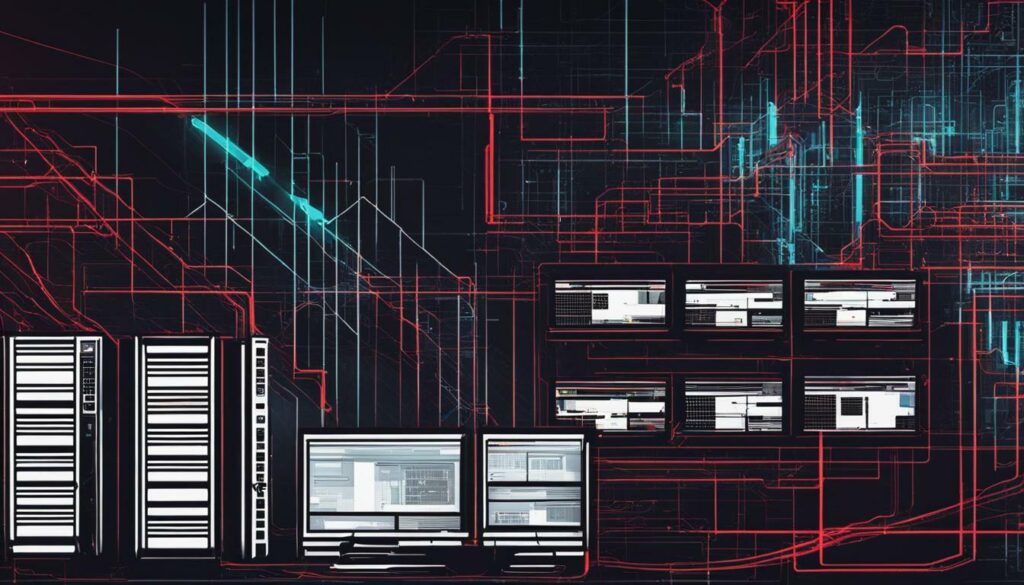As cyber threats become increasingly sophisticated, it is crucial to understand the differences between next-gen firewalls and traditional firewalls to protect your network infrastructure from potential breaches. Next-generation firewalls (NGFWs) are the more advanced form of firewalls and offer robust protection for business networks. They have additional features such as application awareness, intrusion prevention system (IPS), and deep packet inspection (DPI). On the other hand, traditional firewalls provide stateful inspection based on port, protocol, source, and destination address. NGFWs have more layers of security and application-level control compared to traditional firewalls. They also support SSL traffic inspection, reputation and identity…
Author: Christoph
Endpoint compliance and security are critical for businesses to protect themselves from cyber threats and ensure the safety of their sensitive data. With the increasing number of devices connected to corporate networks, it has become crucial to implement effective measures and tools to enhance endpoint security and compliance. One such tool that can significantly strengthen endpoint security is the Endpoint security node in Intune. This powerful tool empowers security admins to configure device security and manage security tasks for at-risk devices. With the Endpoint security node, admins can review the status of managed devices, deploy security baselines, manage security configurations…
Host-based IDS features are an essential component of network security, providing vital protection against various threats. These intrusion detection systems play a critical role in safeguarding network systems from malicious activity. By evaluating incoming and outgoing traffic, performing signature-based detection, utilizing threat intelligence, and monitoring critical files, host-based IDS features enable real-time monitoring and swift response to potential threats. Key Takeaways: Host-based IDS features are essential for network security, protecting against unauthorized activities. Intrusion detection systems evaluate traffic, perform signature-based detection, and utilize threat intelligence. Host-based monitoring allows for real-time monitoring of critical files and identifies unusual activities. Log analysis…
Network security is crucial in today’s digital landscape, and next-gen firewalls offer a multitude of benefits to safeguard your organization’s sensitive data and resources. With enhanced security features and advanced threat detection capabilities, next-gen firewalls provide a comprehensive solution to protect against evolving cyber threats. Key Takeaways: Next-gen firewalls leverage threat intelligence for real-time monitoring and proactive defense against unknown malicious malware. They combine multiple security technologies, including intrusion prevention and web security capabilities, to provide robust network protection. Next-gen firewalls offer cost efficiency by replacing multiple security products with a single platform, resulting in reduced operational costs. Resource efficiencies…
Data loss prevention (DLP) tools are essential for safeguarding sensitive email data from unauthorized access. With the increasing risks of data breaches and cyber threats, organizations need robust solutions to protect their confidential information. In the United States, several top DLP tools have emerged, offering advanced features and functionalities to ensure data protection. These DLP tools play a crucial role in preventing data leakage, ensuring compliance with regulations, and mitigating security risks. By implementing reliable data protection software, organizations can maintain the integrity and confidentiality of their email communications. Key Takeaways Top email data loss prevention tools in the United…
In today’s digital landscape, ensuring the security of your computer networks is of utmost importance. By harnessing the power of network-based IDS (Intrusion Detection System), you can fortify your systems against potential threats and breaches. Key Takeaways Network-based IDS is a vital tool for securing computer networks and preventing unauthorized access. IDS software monitors network traffic for suspicious activity and alerts system administrators when potential threats are detected. There are different types of IDS, including Network IDS (NIDS), Host IDS (HIDS), Protocol-based IDS (PIDS), Application Protocol-based IDS (APIDS), and Hybrid IDS. IDS can detect malicious activity, improve network performance, meet…
In today’s interconnected digital landscape, maximizing security with real-time SIEM monitoring solutions is crucial. SIEM systems, which combine Security Information Management (SIM) and Security Event Management (SEM), play a vital role in collecting, analyzing, and correlating security event data from various sources. By integrating machine learning and AI technologies, organizations can enhance their threat detection and response capabilities, ensuring proactive incident detection and response. Incident response automation, threat intelligence integration, regular reviews, and continuous training are essential for maximizing the potential of SIEM solutions. It is crucial to collect valuable data, analyze it for trends and patterns, and build actionable…
Host-based IDS systems play a crucial role in network security, providing the necessary tools and strategies to detect and prevent cyber attacks. In today’s digital landscape, where threats are constantly evolving, it is essential for organizations to have robust intrusion detection systems in place to safeguard their sensitive information and assets. The book “Mastering Host-Based IDS Systems: A Comprehensive Guide” by Stephen Northcutt and co-authored by Daniel Cid serves as a definitive resource for understanding and utilizing the OSSEC Host-based Intrusion Detection system. This comprehensive guide covers all aspects of installing, configuring, and leveraging OSSEC to effectively prevent and mitigate…
Data encryption plays a crucial role in healthcare organizations by enhancing data security and protecting sensitive patient information. Encrypting all data and devices containing electronic Protected Health Information (ePHI) is necessary to prevent unauthorized disclosures and expensive fines imposed by the Health Insurance Portability and Accountability Act (HIPAA). Regular assessment and improvement of the encryption system are recommended to stay ahead of evolving cybersecurity threats. By making data unreadable to unauthorized individuals, encryption safeguards against data breaches and impermissible disclosures, ensuring the privacy and security of healthcare data. Key Takeaways: Encryption is crucial for healthcare organizations to enhance data security…
In today’s digital landscape, secure encryption algorithms play a vital role in safeguarding data and protecting it from unauthorized access. With the increasing prevalence of cyber threats, it is essential to adopt trusted and robust encryption techniques to ensure the confidentiality and integrity of sensitive information. Key Takeaways: Secure encryption algorithms are crucial for data protection and safeguarding sensitive information. AES-256 encryption, with its 256-bit key, provides a high level of security against brute-force attacks and is virtually crack-proof. AES-256 encryption is widely recognized and adopted for its robust security, compatibility, and efficiency. It is suitable for various applications, including…











